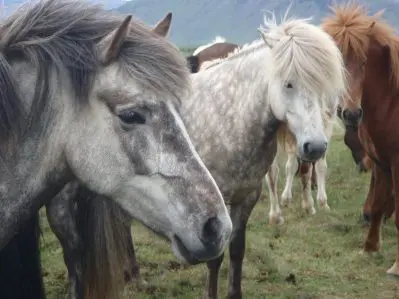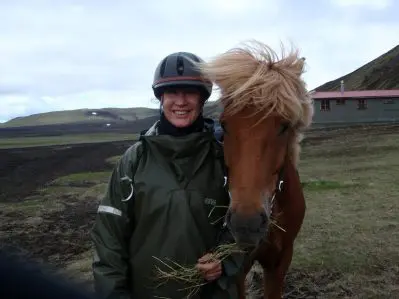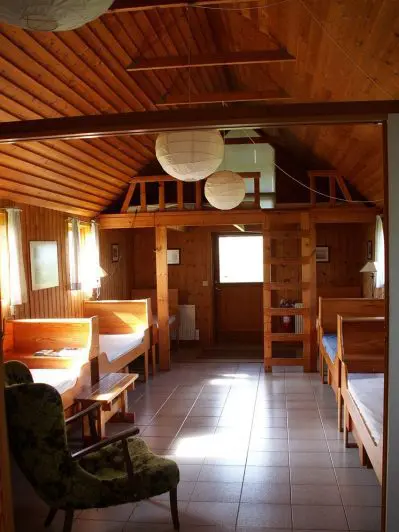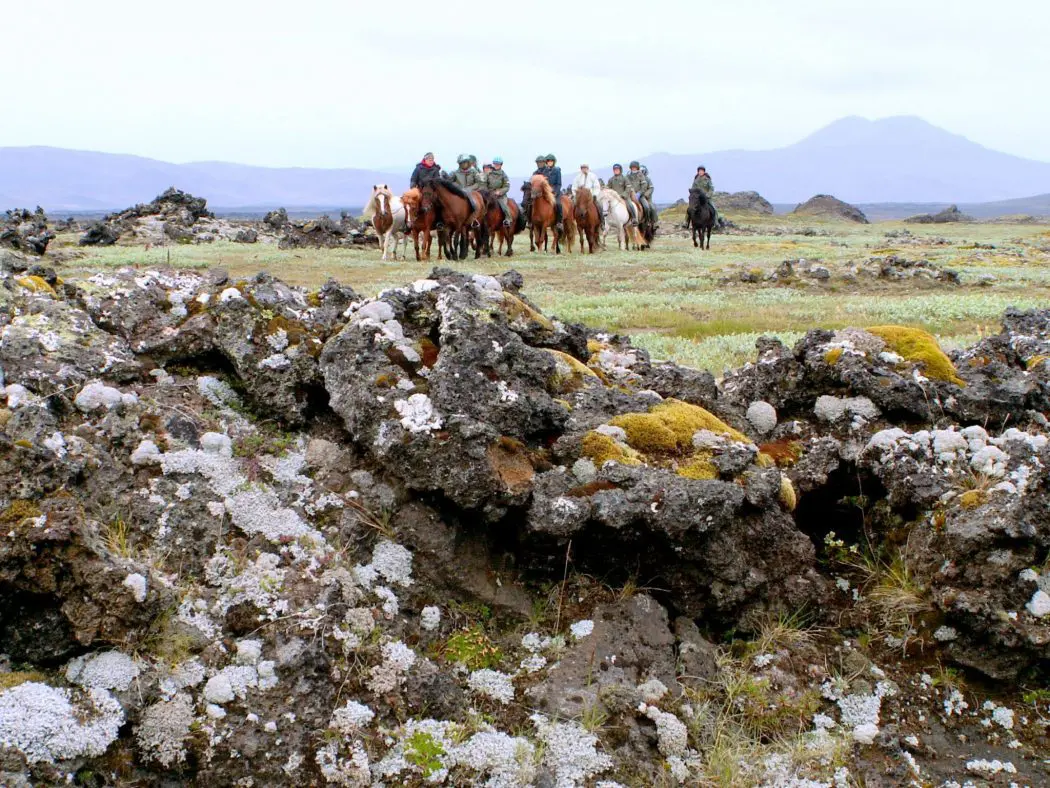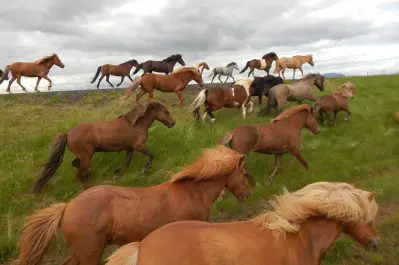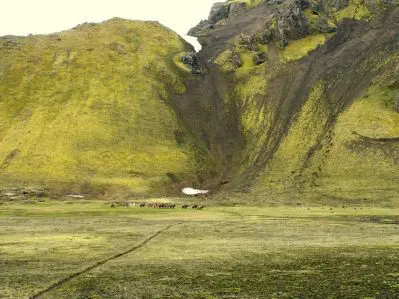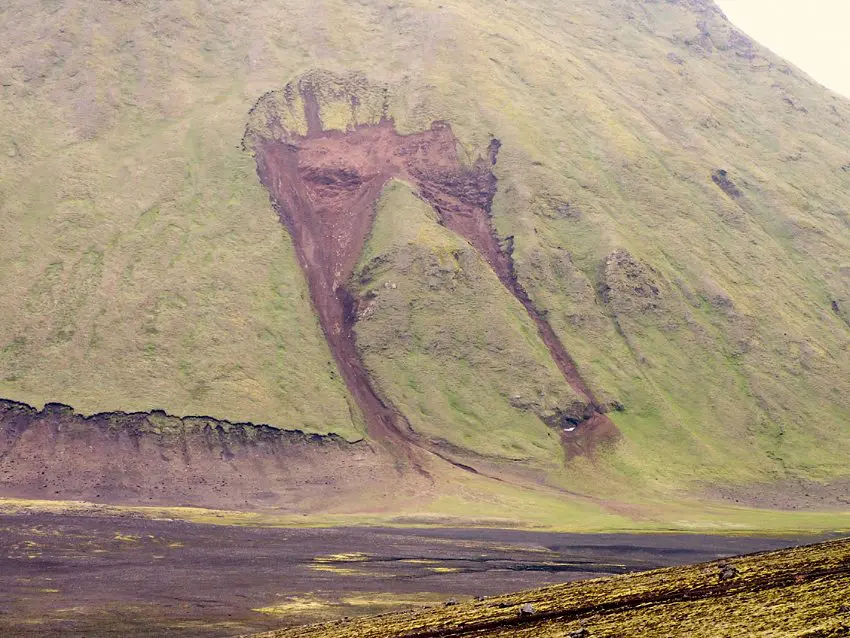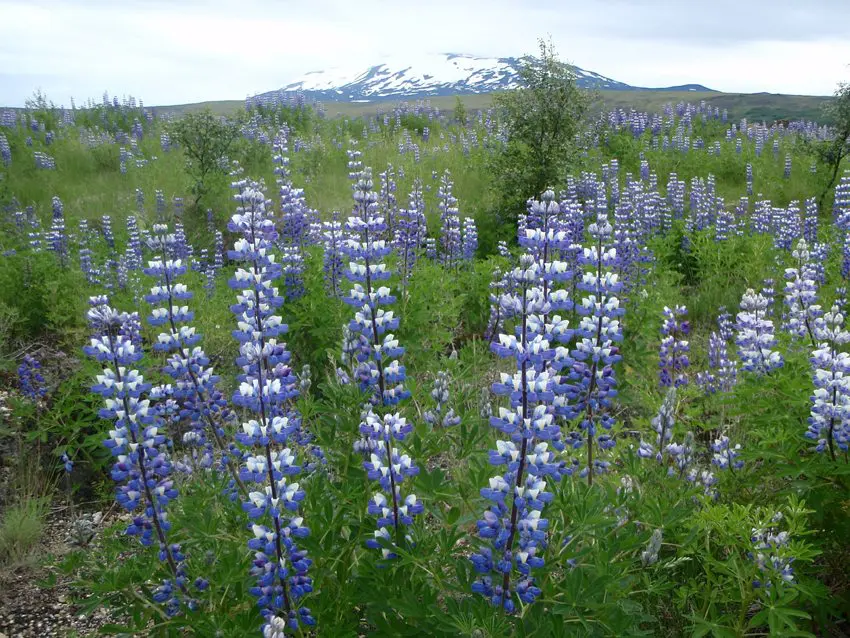Not for the faint of heart
Icelandic legend spins the tragic, true tale of falsely accused folk hero Fjalla-Eyvindur and his wife Halla. Exiled in the inhospitable highlands with little food and no shelter, their children died in infancy except for one beloved but weak two-year old daughter.
Their hideout discovered, and the need to run upon them, they made a decision. Halla cradled her daughter in her arms and sang her to sleep with the lullaby “Sofðu unga ástin mín” (“Sleep my young darling”) before dropping the slumbering child over a waterfall to a quick and certain death so she and her husband could flee unhindered.
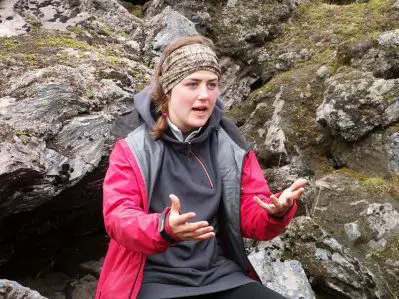
Anita kept us entertained with Icelandic legends as well as informing us about her country’s unique geology.
Our guides Anita and Elva, both young mothers themselves, solemnly sang this lullaby in their heart-wrenchingly clear voices to our group of riders as we rested by a stream in the highlands where the ghost of Fjalla-Eyvindur is rumored to wander. Beside me, the young Danish wrangler Nina fought unsuccessfully to hold back the black tears streaming down her dust-covered face.
“Did you understand all the words?” I whispered once the song had ended. “No,” she choked in reply. ”The music is just so full of sadness.”
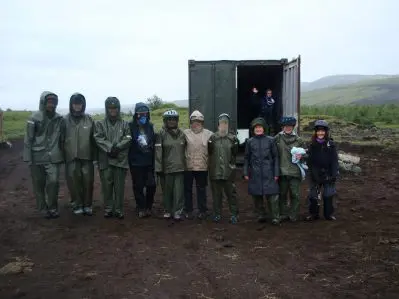
The weather was ever changing. This is our group modeling Icelandic rain gear on the wettest and coldest day.
We were an all-women’s group for the first ride of the Icelandic summer; 16 intrepid riders from America, Australia, Austria, Denmark, Iceland and Switzerland on this dark and blustery June day in the forlorn highlands north and west of the slumbering volcano Hekla. The melancholy tune touched all of us; daughters, wives, mothers, grandmothers… our ages spanning the decades of twenties through sixties, all here to experience riding the iconic Icelandic horses in their ancestral volcanic island home.
Iceland has a population of around 315,000 inhabitants who own over 100,000 of this uniquely pure-bred stock. Brought in longboats to the country by the Vikings from Norway and the British Isles late in the 9th century, they are considered one of the oldest breeds of domestic horses in existence today. Bred more for their temperament and personalities than for color, these friendly, stocky steeds are treated as part of the families they live with. Having evolved in such a harsh environment, they are amazingly surefooted and confident, practically floating over the landscape in their smooth tölt gait. To interact with them is amazing, but to ride them is nothing short of magical.
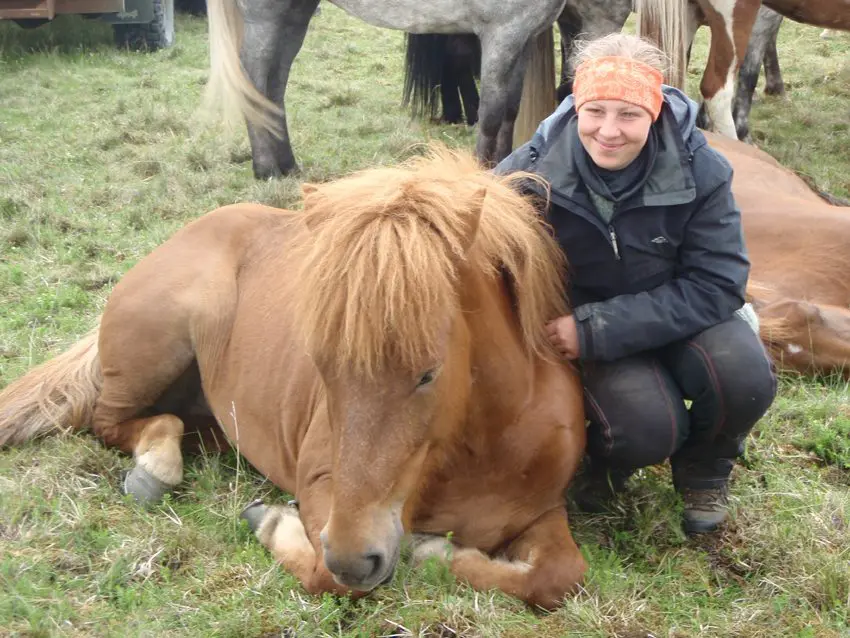
Our Danish Wrangler Nina comforting one of the younger horses who was tired on his first big excursion with the herd and riders.
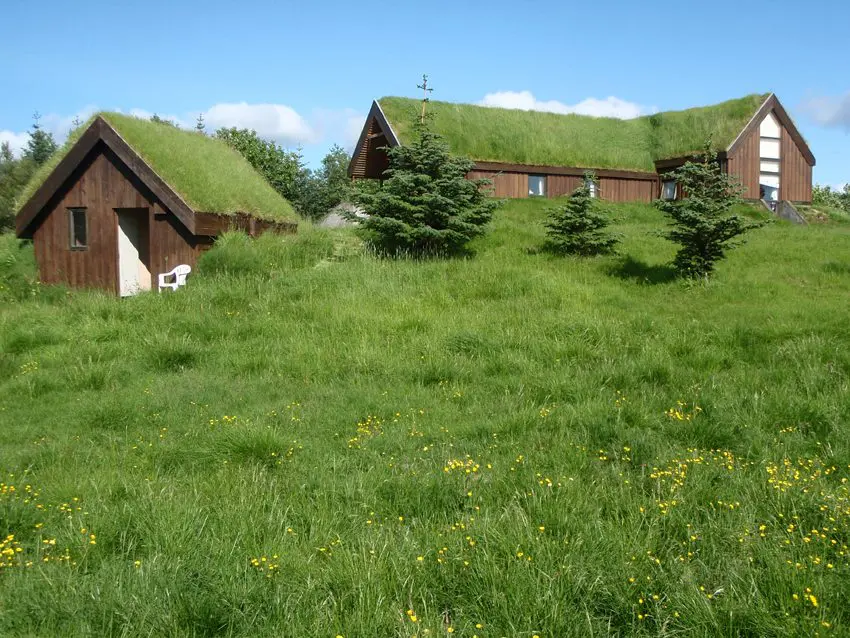
Our accommodations for the first and last nights were at the outfitters’ farm, which had the typical grass-covered roof.
On arrival night at our hosts’ farmhouse, we were asked to tell a bit about our riding experiences and the type of horse we enjoy riding most. Our guide Anita listened intently to our answers in order to assign each of us two horses to ride in the week ahead, her philosophy being that you must ride a horse three times before the two of you truly connect. The next morning after breakfast we assembled at the nearby corral, greeted by inquisitive eyes shining beneath thick bangs, seemingly as curious about us as we were of them. The barn doors slid open and the wranglers clapped their hands as the herd disappeared into the dark interior. A few minutes passed and the door opened again with a wrangler leading a mount out to each rider in turn. The tongue twisting Icelandic names of the horses were difficult to remember in the beginning. My first steed was Sleipnir, named after the eight-legged horse of the Nordic god Odin. At the age of 17 he was one of the older horses, but was quite forward, attentive and eager to please. Before the farmhouse was out of sight, I had relaxed and given this handsome bay with the thick black mane my full trust.
My other equine companion was a sorrel with a strawberry blonde mane by the name of Plutus, tall for an Icelandic horse at 15 hands. He was only seven years old, but even more mellow than Sleipnir, 10 years his senior. When I remarked on this trait to our host Stefnir, he commented that Plutus “has an old soul”. In addition, however, he also had the flying pace, skeid, which I was able to coax him into on several occasions and together we floated along at our own smooth pace while the more daring riders usually left us, quite literally, “in the dust” as they galloped past.
Those who have never been to Scandinavia or done the Youth Hostel rite of passage in Europe are sometimes taken aback when they see the sleeping arrangements in the cabins and huts along the ride route. Mattress to mattress, bunk-bed style platforms offer sleeping space upon which 16-20 people may roll out their sleeping bags. Of course, in an open room there can be night noises such as people climbing down the ladders in the dark, sleeping bags rustling when someone rolls over, snoring, as well as some folks talking (and even singing!) in their sleep. Anita has a supply of ear plugs available for those who sleep lightly. If you enjoy camping or roughing it, then you’ll do fine. There are flushing toilets at each overnight stop, as well as running water, but showers are only available in 2 of the 4 overnight locations, although there is an opportunity to soak in thermal springs as well as to shower one afternoon in Landmannalaugar. Touring Iceland on horseback is, in many ways, a “change of pace”.
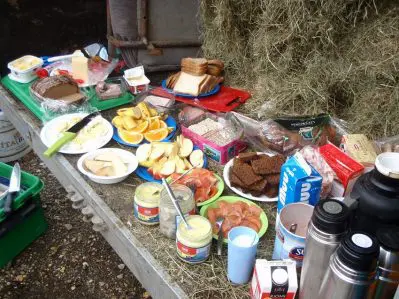
Smoked salmon and lamb, cheese and butter, a variety of breads and even special gluten free and vegetarian dishes were served at every meal.
In regards to food, Anita, Emilia, Elva and Nina were up daily before the guests preparing a buffet style breakfast consisting of muesli, fruit, yogurt, several kinds of homemade bread, jams, honey, and lots of the delicious Icelandic butter and cheese, washed down with ample coffee, tea and hot chocolate. After breakfast everyone would make their own “pocket lunch” for the ride consisting of sandwiches with sliced meats (including smoked lamb), cheese and vegetables, as well as fruit and cookies. Snacks appeared magically while the guests were getting out of their dusty gear at the end of the riding day, followed by freshly prepared warm meals of hearty soup, bread & butter, roasted lamb, fish, vegetables, stews, pasta dishes and desserts. Everyone pitched in with setting the table and washing up, family style.
There is no “cocktail hour” on this ride, no doubt for several reasons. For one, the converted Dodge Ram (lovingly nicknamed “Green Monster”) which transported all our belongings and food for the entire week was stuffed to the ceiling with absolute essentials and no room to transport additional bottles. Anita did surprise us on the trail with a shot of whiskey in our hot chocolate on one particularly cold and wet day, as well as a box of red wine (equivalent to 4 bottles) the night of our farewell dinner. It is possible to purchase beer at the stopover in Landmannalaugar, but other than that, this tour is dry.
Anita had long wanted to offer a designated “all women’s ride”, and it was very interesting to observe the women of diverse ages and cultures interact. The common denominator, as usual on such rides, was horses. We shared our tales of falls and injuries, competitions, places we had ridden in the past and dreams of future rides over supper every evening. We had the great fortune of all being more or less competent equestrians, and no one came off their horse during the week. I’ll certainly give my kudos to Sleipnir and Plutus, who never stumbled or shied while moving along confidently with the herd of free-running horses that accompanied us.
Now that was an experience! Riding with a herd of free horses mixed amongst the riders, tölting along with luxurious manes and tails flying, accompanied by the four-beat sound of hooves pounding the volcanic soil, clipping over paved roads, splashing through rivers, striking rocks. Since the Icelandic horses are raised in this rugged environment, they know how best to navigate it. This particular horse herd is very familiar with the ride route and knows where to stop, wait, slow down, or go full throttle. After a very short time, I was able to totally relax and be one with my horse in this colorful tölting procession. It’s a remarkable experience for sure.
We left the herd at a base camp on the days we ventured into the remote areas of the highlands. Climbing high to the rims of black and red craters filled with turquoise lakes, galloping over the black crater floors of extinct volcanoes, leaving temporary tracks of our existence in the wind-swept surface, riding quietly as tiny specks against the massive mountains around us…Iceland can make a person feel very small but very strong at the same time.
The Icelandic women are remarkable, physically and in spirit. They can shoe horses, change flat tires, bake and cook and explore mountaintops, live at the foot of active volcanoes, sing folk songs, raise children and slaughter lambs, all the while being warm and gracious to strangers. Their strength was evident to us during our summer ride. I can only imagine the trials of surviving winter on the island, which brings us back to the chillingly beautiful song sung to our group by Anita and Elva as we entered the desolate and mysterious highland area where there is no food, shelter or lodging and where the basalt formations and mountain features take on the shape of trolls and monsters in the mists.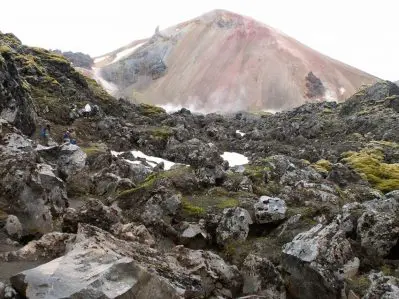
To enjoy a ride over this sometimes verdant but more often stark topography, riders must have the willingness to give up their creature comforts for a week in return for an in depth experience in one of the most unusual places on earth as seen from the strong backs of the dependable Icelandic horses. In my case, the reward was the ride of a lifetime.
Ride review by Trudy Trevarthen


